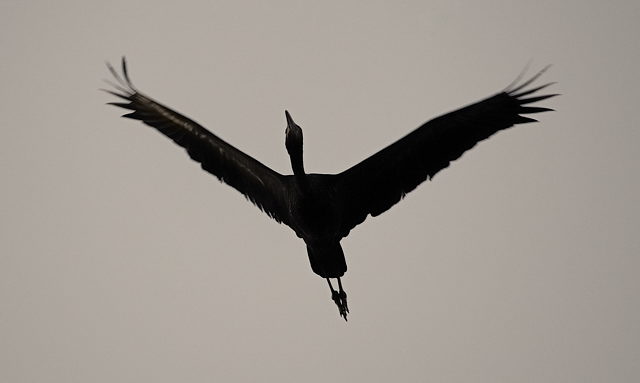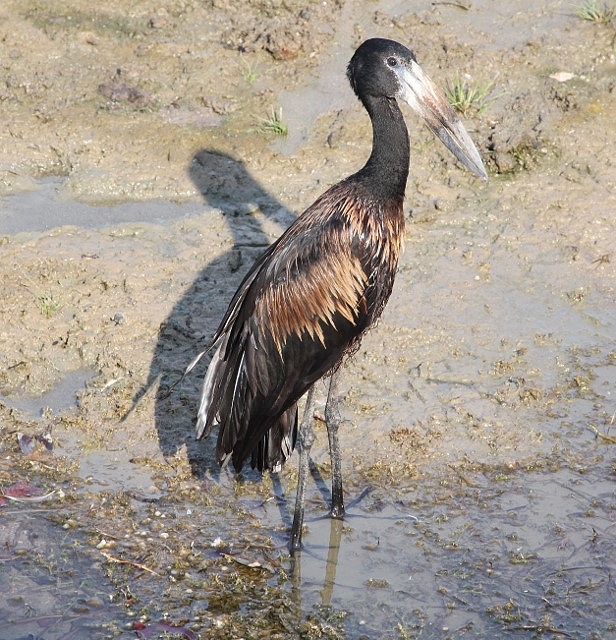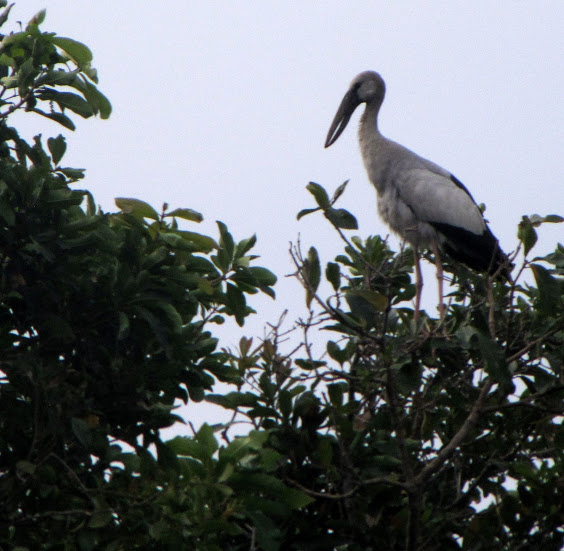
Storks (Family Ciconiidae) - Bird of the Month: March 2013
Re: Stork - Bird of the Month: March 2013
An African Openbill heading to roost at dusk.


Dewi
What is the good of having a nice house without a decent planet to put it on? (H D Thoreau)
What is the good of having a nice house without a decent planet to put it on? (H D Thoreau)
- nan
- Posts: 26448
- Joined: Thu May 31, 2012 9:41 pm
- Country: Switzerland
- Location: Central Europe
- Contact:
Re: Stork - Bird of the Month: March 2013
Openbill Stork/Bec ouvert africain

Kruger National Park

Kruger National Park
Kgalagadi lover… for ever
https://safrounet.piwigo.com/
https://safrounet.piwigo.com/
- Amoli
- Posts: 6032
- Joined: Fri Jun 01, 2012 4:30 am
- Country: South Africa
- Location: Kempton Park
- Contact:
Re: Stork - Bird of the Month: March 2013
African Open bill storks at Kumane Dam


Pretoriuskop
Satara
Shingwedzi
20-30 Dec 2014
Satara
Shingwedzi
20-30 Dec 2014
- Lisbeth
- Site Admin
- Posts: 66797
- Joined: Sat May 19, 2012 12:31 pm
- Country: Switzerland
- Location: Lugano
- Contact:
Re: Stork - Bird of the Month: March 2013
Asian Openbill, (Anastomus oscitans) (Cambodia)
a very bad pic, but it shows what it is


a very bad pic, but it shows what it is


"Education is the most powerful weapon which you can use to change the world." Nelson Mandela
The desire for equality must never exceed the demands of knowledge
The desire for equality must never exceed the demands of knowledge
Re: Stork - Bird of the Month: March 2013
Abdim’s Stork Ciconia abdimii
It occurs across much of sub-Saharan Africa. In southern Africa it is common to locally abundant in western Mozambique, Zimbabwe, northern and north-eastern South Africa, Botswana and Namibia. It generally prefers savanna woodland, grassland, pastures, pan edges, cultivated land and suburban areas.
The Abdim’s stork is a visitor to Southern Africa, most arriving from its breeding grounds in East and West Africa during November and departing again in April. They are gregarious birds, usually found in large flocks, especially where there are plenty of insects.
They are quite large birds, although they are the smallest of the storks, about 75 cm in length, and are mainly black, with a purple sheen to their feathers. The belly and rump are white and the bare skin on their cheeks is blue, although this is somewhat duller when they are not breeding. There is a red patch in front of the eyes. The bill and legs are olive green and their toes and knees are red. Sexes are similar, although the males are a little larger than the females.
During the months that they spend in Southern Africa, the Abdim’s storks remain in the more Northerly parts of the region, restricting themselves to the highveld grasslands and parts of the Kalahari. During this time they are largely silent although there is some bill clattering that takes place.
Abdim’s storks feed mainly on insects, lizards, frogs, and army worms. They seem to be especially fond of locusts, grasshoppers and crickets and for this reason in some areas they are known as “grasshopper birds”.
Like several other stork species, Abdim’s Storks defecate on their legs to assist with cooling in the hot weather.
It occurs across much of sub-Saharan Africa. In southern Africa it is common to locally abundant in western Mozambique, Zimbabwe, northern and north-eastern South Africa, Botswana and Namibia. It generally prefers savanna woodland, grassland, pastures, pan edges, cultivated land and suburban areas.
The Abdim’s stork is a visitor to Southern Africa, most arriving from its breeding grounds in East and West Africa during November and departing again in April. They are gregarious birds, usually found in large flocks, especially where there are plenty of insects.
They are quite large birds, although they are the smallest of the storks, about 75 cm in length, and are mainly black, with a purple sheen to their feathers. The belly and rump are white and the bare skin on their cheeks is blue, although this is somewhat duller when they are not breeding. There is a red patch in front of the eyes. The bill and legs are olive green and their toes and knees are red. Sexes are similar, although the males are a little larger than the females.
During the months that they spend in Southern Africa, the Abdim’s storks remain in the more Northerly parts of the region, restricting themselves to the highveld grasslands and parts of the Kalahari. During this time they are largely silent although there is some bill clattering that takes place.
Abdim’s storks feed mainly on insects, lizards, frogs, and army worms. They seem to be especially fond of locusts, grasshoppers and crickets and for this reason in some areas they are known as “grasshopper birds”.
Like several other stork species, Abdim’s Storks defecate on their legs to assist with cooling in the hot weather.
Re: Stork - Bird of the Month: March 2013
The scientific name for the Absdim’s stork is Ciconia abdimii; Ciconia from the Latin for a stork and abdimii being derived from the name al-Arnaut Abdim, a Turkish provincial governor in the Sudan in the early 19th Century. This governorship was in the early years of the Turco-Egyptian conquest of the Sudan, which lasted until 1885. Abdim aided, it seems, the German naturalist and collector Wilhelm Rüppell. Rüppell collected the first described Abdim’s Stork specimen in the Sudan and named it for his benefactor. 
- nan
- Posts: 26448
- Joined: Thu May 31, 2012 9:41 pm
- Country: Switzerland
- Location: Central Europe
- Contact:
Re: Stork - Bird of the Month: March 2013
Kgalagadi January 2012
Abdim's Stork/Cigogne d'Abdim
a very big flock


Abdim's Stork/Cigogne d'Abdim
a very big flock


Kgalagadi lover… for ever
https://safrounet.piwigo.com/
https://safrounet.piwigo.com/
Re: Stork - Bird of the Month: March 2013
Woolly-necked Stork
Within the southern African region the Woolly-necked stork is limited to the wetter northern areas, which is not surprising as its preferred habitat is wetlands and rivers. It is also found in large parts of Africa to the north of the southern African region and through large parts of Asia.
The Woolly-necked stork is a large bird with a length of approximately 84 cm. The sexes are alike in both size and plumage colouration. Overall, these storks are predominantly black, with distinctive white necks that look woolly. The upperparts become a glossy purple during the breeding season. The bill is black, with a reddish tip; legs and feet are blackish-red; eyes are crimson.
There are both resident and migrant populations of Woolly-necked storks in the southern African region, with the number of birds in northern Namibia and Botswana increase due to the presence of non-breeding mogrants during the summer months. They feed mainly on insects, crabs, mollusks, fish and crabs.
Like most storks, the Woolly-necked stork flies with its neck outstretched and its broad wings enable it to soar for long periods of time on rising thermals of hot air with hardly a wing-beat. Although the birds are usually silent, they may call while at their nests, and also indulge in some bill-clattering when encountering their partners at their nests.
Woolly-necked storks are monogamous and build large platform-like nests high up in a tree, usually over water or swamp. The female lays a clutch of two to five eggs that hatch after an incubation period of about 31 days.
Within the southern African region the Woolly-necked stork is limited to the wetter northern areas, which is not surprising as its preferred habitat is wetlands and rivers. It is also found in large parts of Africa to the north of the southern African region and through large parts of Asia.
The Woolly-necked stork is a large bird with a length of approximately 84 cm. The sexes are alike in both size and plumage colouration. Overall, these storks are predominantly black, with distinctive white necks that look woolly. The upperparts become a glossy purple during the breeding season. The bill is black, with a reddish tip; legs and feet are blackish-red; eyes are crimson.
There are both resident and migrant populations of Woolly-necked storks in the southern African region, with the number of birds in northern Namibia and Botswana increase due to the presence of non-breeding mogrants during the summer months. They feed mainly on insects, crabs, mollusks, fish and crabs.
Like most storks, the Woolly-necked stork flies with its neck outstretched and its broad wings enable it to soar for long periods of time on rising thermals of hot air with hardly a wing-beat. Although the birds are usually silent, they may call while at their nests, and also indulge in some bill-clattering when encountering their partners at their nests.
Woolly-necked storks are monogamous and build large platform-like nests high up in a tree, usually over water or swamp. The female lays a clutch of two to five eggs that hatch after an incubation period of about 31 days.
Re: Stork - Bird of the Month: March 2013
The scientific binomial for the Woolly-necked stork is Ciconia episcopus; Ciconia from the Latin for the “White stork”; and episcopus from the Latin for “a bishop”. Thus a White stork that looks like a bishop, the latter presumably a reference to the bird’s colouring matching a black cassock with a white collar. 


- Amoli
- Posts: 6032
- Joined: Fri Jun 01, 2012 4:30 am
- Country: South Africa
- Location: Kempton Park
- Contact:
Re: Stork - Bird of the Month: March 2013
Wooly necked


Pretoriuskop
Satara
Shingwedzi
20-30 Dec 2014
Satara
Shingwedzi
20-30 Dec 2014


